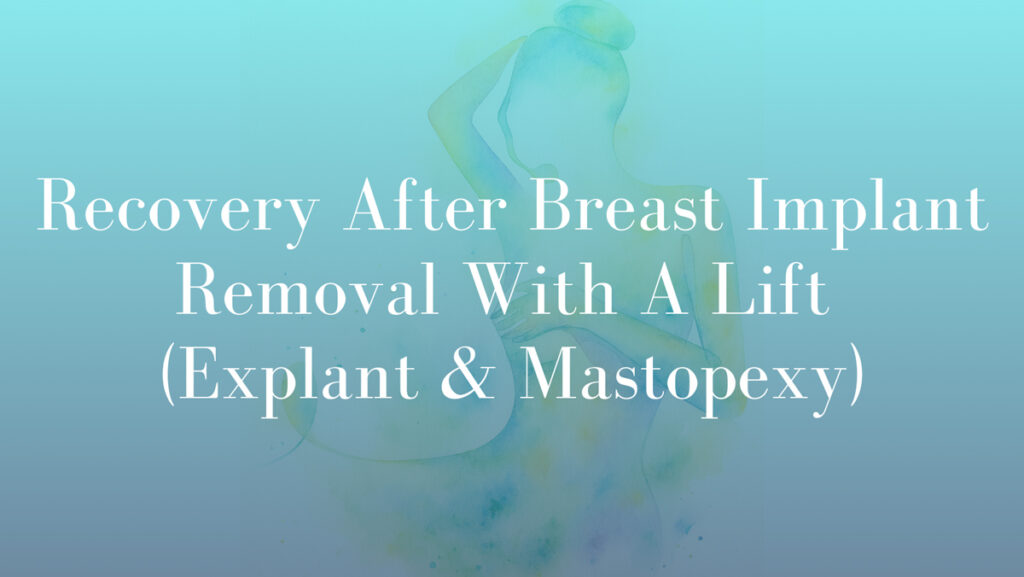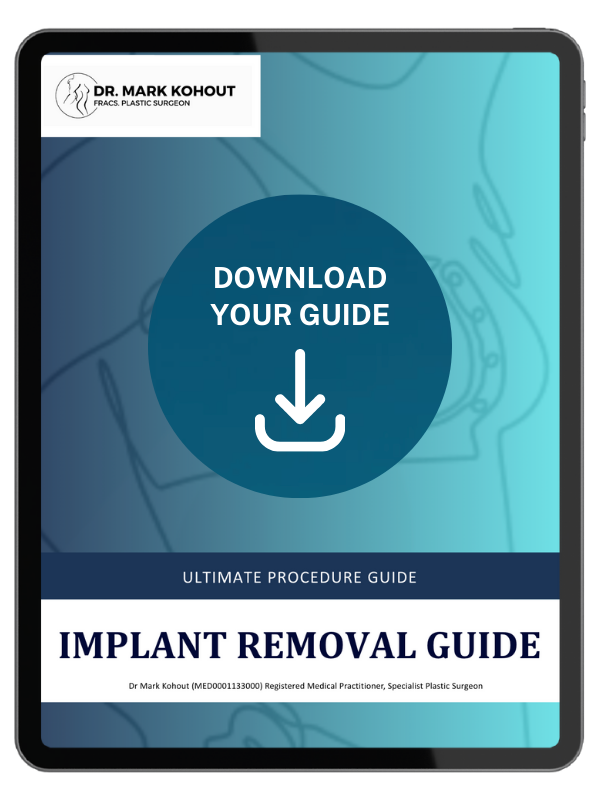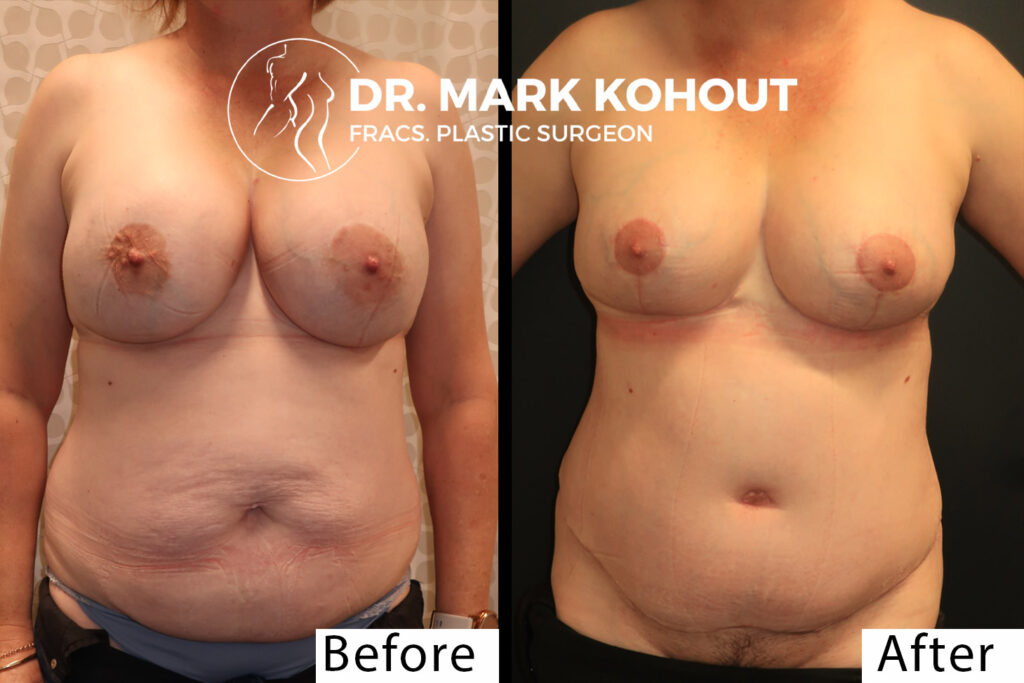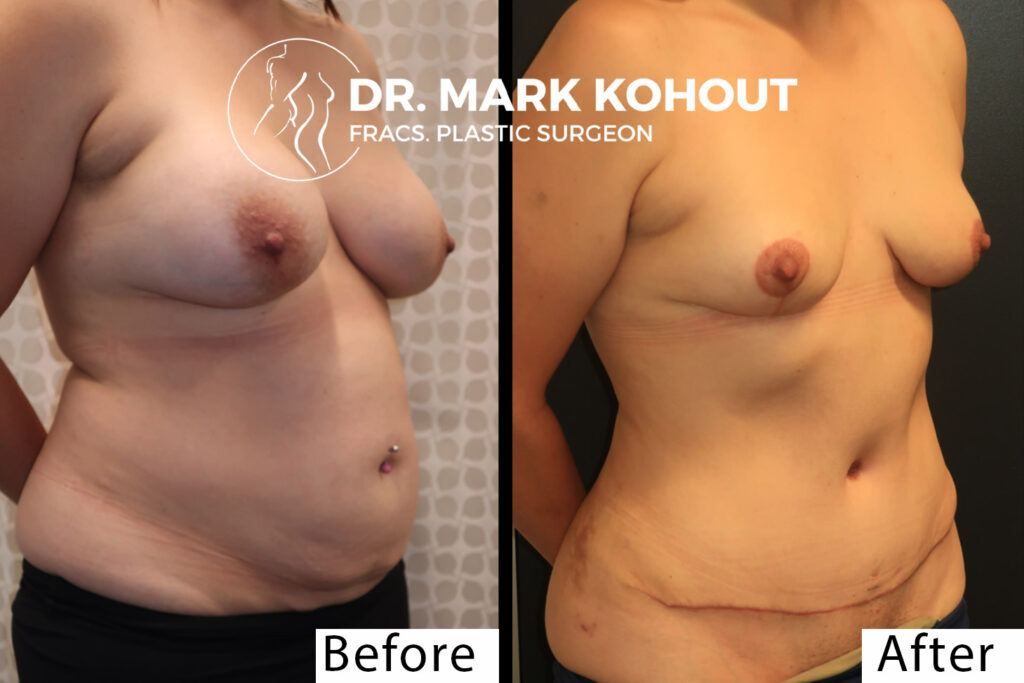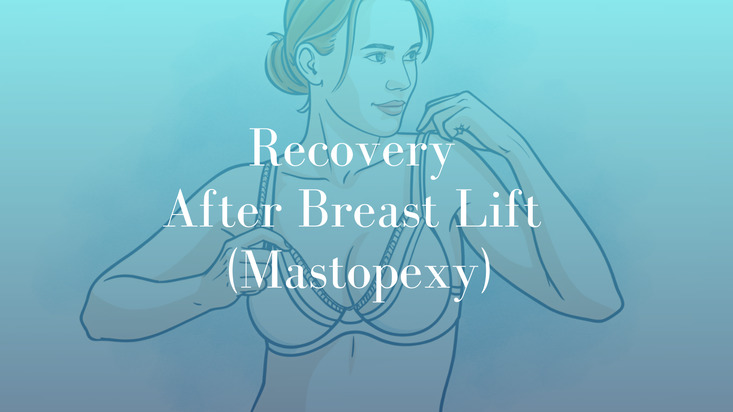
Many women who once chose breast implants find that, over time, their preferences or health considerations change. Some decide that implants no longer suit their lifestyle, while others experience medical reasons that make removal the right option. When implants are removed, the breast tissue and skin may not always return to their previous form. In these cases, combining implant removal with a breast lift – known medically as explant and mastopexy – may be considered.
Dr Mark Kohout, Specialist Plastic Surgeon in Sydney, regularly consults with patients who are exploring this choice. The combined procedure addresses both the removal of implants and the reshaping of breast tissue, aiming to support a balanced breast appearance without implants. Patients may pursue this option for many reasons, ranging from changes in body proportions to concerns about implant longevity.
This article offers a detailed, factual discussion of recovery following breast implant removal with a lift. It explains the phases of healing, the factors that influence how long recovery may take, the risks involved, and the role of follow-up care. The goal is to provide clear, evidence-based information so that patients in Sydney and beyond can understand the recovery process and make informed decisions with the guidance of their surgeon.
Understanding Breast Implant Removal With A Lift
Breast implant removal, also called explant surgery, involves taking out implants that were previously inserted to change breast shape or volume. Some patients request removal because of complications, such as rupture or capsular contracture, while others simply no longer wish to have implants. Explant surgery can be performed in different ways depending on the condition of the implant and the capsule, which is the scar tissue that naturally forms around the implant. In some cases, the capsule is left in place, while in others part or all of the capsule is removed. The approach is determined by medical findings and individual patient needs.
Mastopexy, or breast lift, is a separate but related procedure where breast tissue and skin are tightened and repositioned. When performed at the same time as implant removal, the lift supports the breast tissue so that it sits higher on the chest wall. Without a lift, some women may find that their breasts sit lower than they would like after explant surgery, particularly if their implants were large or in place for many years.
Choosing to combine the two procedures can help address both the removal of the implant and the effects of stretched skin and tissue in a single operation. Many patients in Sydney consider this approach as it avoids the need for separate surgeries and allows for one recovery period. It is not suitable for everyone, but it can be a practical solution when implants are removed and additional support for the breast is desired.
Key Factors That Influence Recovery
Recovery following breast implant removal with a lift is not the same for every patient. Several variables affect how quickly and comfortably healing progresses, and understanding these factors can help patients prepare for the post-operative period.
The surgical technique itself has a direct impact. If the surgeon performs implant removal alone, recovery may be shorter compared to when a full capsulectomy is included. When the capsule is removed, tissues may take longer to settle. The type of breast lift performed also matters. Techniques that involve longer incisions or more extensive reshaping can extend the healing period, as more tissue is being adjusted during surgery.
A patient’s implant history is also relevant. Larger implants tend to stretch skin and tissue more, and this can influence how the breasts respond once the implants are removed. Similarly, the length of time implants have been in place affects skin elasticity. Patients who have had implants for many years may notice more significant changes in their breasts after explant surgery, which in turn can extend the recovery timeline.
The natural quality of the breast tissue and skin also plays a role. Women with firm tissue and good elasticity often find that their bodies adjust more quickly. In contrast, those with thinner tissue or less elasticity may take longer to see their breasts settle into a final position after the lift.
Lifestyle and general health strongly influence recovery as well. Smoking, for example, is known to reduce circulation and delay healing. Patients with underlying medical conditions may also take longer to recover. On the other hand, patients who maintain a balanced lifestyle and are otherwise in good health may find that their healing progresses more smoothly.
Finally, post-operative care is essential. Wearing support garments as directed, following wound care instructions, and avoiding strenuous activity all contribute to a more predictable recovery. Patients in Sydney often consider practical issues such as planning time away from work, arranging household support, and managing comfort during warmer months, which can affect recovery.
The Recovery Timeline
The recovery process unfolds gradually, and although each person heals differently, there are general stages that most patients experience.
✔ Immediately After Surgery (Days 1-7)
In the immediate days after surgery, usually within the first week, patients often return home on the same day or after an overnight stay, depending on the complexity of the procedure. Dressings are applied to protect the incisions, and a supportive garment is typically recommended to reduce swelling and provide stability. Some patients may have drains in place, which are removed after a short period. It is very common to experience swelling, bruising, and a feeling of tightness across the chest during this stage. Movement is encouraged, but strenuous activity is avoided to allow tissues the opportunity to settle.
✔ The First Few Weeks (Weeks 2-4)
During the following weeks, from the second to the fourth, swelling usually starts to subside, and bruising begins to fade. Patients often report that discomfort becomes easier to manage, and they can return to light daily activities. Desk-based work is often resumed at this point, although any job that involves physical exertion may require a longer break. Follow-up appointments take place to monitor incision healing and to remove sutures if necessary.
✔ Returning To Normal Activities (Weeks 4-8)
Between four and eight weeks after surgery, many patients gradually increase their activity levels. Walking and light exercise are often permitted, but more strenuous workouts and upper body movements are postponed until the surgeon gives approval. Support garments may still be required, and scar care often begins during this stage. The breasts also continue to change during these weeks as tissues adjust, so the appearance at this stage should not be considered final.
✔ Long-Term Healing (3-12 Months)
The longer-term healing phase extends from three months to a year after surgery. Breast tissue continues to adapt, and the final shape and position become clearer. Scars, which may initially appear raised or red, usually soften and fade over time. Some patients may notice changes in nipple sensation, and while these may improve, they can also be permanent in some cases. By this stage, most patients in Sydney return fully to their normal routines, including all forms of exercise.
Supporting Recovery
The actions patients take during recovery have a significant effect on how the healing process progresses. Closely following the surgeon’s instructions is one of the most important aspects of care. This may include wearing a supportive bra, caring for incisions, and adhering to limits on physical activity.
Using supportive garments is recommended as they help control swelling and provide comfort during the early recovery period. These garments are designed to hold the breasts in position as tissues heal, reducing strain on incisions. Patients are often asked to wear them both day and night during the first few weeks.
Rest and sleep positioning also matter. Many surgeons recommend that patients sleep on their backs to prevent unnecessary pressure on the chest. This can feel unfamiliar for those used to side sleeping, but it helps to protect the healing tissues.
Nutrition supports the healing process. A balanced diet that includes adequate protein assists tissue repair, and staying hydrated helps maintain circulation and overall health. Patients are encouraged to avoid smoking, as it restricts blood flow, and to limit alcohol consumption, which can interfere with recovery.
Follow-up appointments are an essential part of recovery support. These visits allow the surgeon to check progress, provide reassurance, and adjust recommendations if needed. For patients in Sydney, these appointments also offer the opportunity to ask questions about returning to work, exercise, or other lifestyle activities in a local context.
Risks And Considerations
Every surgical procedure carries risks, and breast implant removal with a lift is no exception. Possible risks include bleeding, infection, and delayed wound healing. Scarring is expected and permanent, although most scars fade over time. Some patients may notice changes in nipple sensation, ranging from increased sensitivity to numbness. These changes may improve over time, but in some cases they can persist.
Asymmetry between the breasts can occur, and while surgeons take steps to create balance, no surgery can guarantee complete symmetry. Fluid accumulation, known as a seroma, may also occur and can require additional treatment.
It is important to remember that the appearance of the breasts after surgery varies widely between individuals. Factors such as skin elasticity, tissue thickness, and personal healing response all influence the outcome. Patients should approach the procedure with an understanding that no surgeon can promise a specific result.
Breast Revision Before and After Images
Follow-Up Care And Monitoring
Recovery does not end once patients leave the hospital or clinic. Long-term care is an integral part of the healing process. Patients return for scheduled appointments with Dr Mark Kohout at his Sydney practice to ensure that incisions are healing correctly, to remove sutures if required, and to monitor overall recovery.
Scar care may be introduced once the incisions are closed, and this can include topical treatments or silicone-based products to help scars settle. Patients are advised to protect scars from direct sun exposure, particularly in Sydney’s strong sunlight, as this can make them more noticeable.
Monitoring for complications remains important. Patients are encouraged to contact the practice if they notice increasing redness, swelling, fluid leakage, or pain that does not improve. Ongoing breast health is also a priority, and regular self-examinations and professional checks should continue even after recovery.
Key Takeaways For Patients Considering This Procedure
Recovery after breast implant removal with a lift is not immediate. It unfolds gradually, beginning with a period of rest and limited activity before progressing to light movement and eventually a return to full routines. The shape and position of the breasts continue to change over several months, and final results may not be visible until a year after surgery.
Scarring is a natural part of any surgery and, while permanent, usually becomes less noticeable with time. Sensation changes can occur, and some may resolve while others may be longer lasting.
Most importantly, every patient’s recovery is unique. Factors such as surgical technique, tissue quality, and individual healing capacity mean that no two journeys are the same. Patients in Sydney considering this procedure should seek a consultation with a qualified plastic surgeon to discuss their personal circumstances in detail.
FAQs About Recovery After Breast Implant Removal With A Lift
Can Recovery Differ If Implants Were In Place For Many Years?
Yes, the length of time implants have been in place often influences recovery. Skin and breast tissue that have been stretched for many years may take longer to settle after implant removal and lift surgery.
Will My Breasts Feel Different After Both Implant Removal And A Lift?
It is common to notice changes in sensation, firmness, and shape after this combined procedure. While some changes improve over time, others may be longer lasting. Every patient’s healing process is unique.
How Soon After Surgery Can I Sleep On My Side Again?
Most surgeons recommend sleeping on the back in the early recovery period to avoid pressure on the chest. The timeline for returning to side sleeping varies depending on how healing progresses and individual comfort.
Are The Scars From A Lift Different To The Scars From Implant Removal Alone?
Yes, a breast lift typically involves longer incisions compared to implant removal alone. While all scars fade over time, the pattern and visibility depend on the lift technique and individual healing.
Does A Lift Always Need To Be Performed When Implants Are Removed?
Not always. Some patients’ breast tissue and skin contract enough after implant removal that a lift is not required. Others benefit from a lift at the same time to support breast shape. The decision is made during consultation.
Can Daily Activities Be Resumed Sooner If Only A Small Implant Was Removed?
Smaller implants often create less stretching of the skin, so recovery may feel easier. However, every surgery still requires a healing period, and return to activity should always follow medical guidance.
How Do Follow-Up Appointments Help During Recovery?
Follow-up visits allow the surgeon to monitor wound healing, check for complications, and provide scar care advice. They are an important part of safe recovery and should not be missed.
Medical References
- Safely Shaping the Breast After Implant Removal and Total Intact Capsulectomy: Mammary Imbrication Lift and Fixation Technique – Cureus Journal of Medical Science https://pmc.ncbi.nlm.nih.gov/articles/PMC10205400/
- Updated Trends of Breast Implant Surgeries: An Israeli Analysis – ScienceDirect https://www.sciencedirect.com/science/article/abs/pii/S1748681523007441
- Breast Implant Removal: What to Expect, Surgery & Recovery – Cleveland Clinic https://my.clevelandclinic.org/health/treatments/21799-breast-implant-removal
Take The Next Step
If you are considering breast implant removal with a lift, personalised advice is essential. Dr Mark Kohout, Specialist Plastic Surgeon in Sydney, provides consultations to help patients understand the procedure, the recovery process, and the risks involved. An in-person discussion offers the opportunity to review your medical history, ask questions, and consider whether this surgery is appropriate for your needs.
To find out more or to arrange a consultation, you can contact Dr Mark Kohout’s Sydney practice. Taking this step allows you to explore your options in a professional and supportive environment, with information tailored to your situation.
Further Reading
- Read more about Dr. Mark Kohout’s Blog on Recovery After Breast Implant Removal: What to Expect and How to Navigate the Process
- Read more about Dr. Mark Kohout’s Blog on What happens after Breast Implant Removal ? (Explant)
Related Blog Posts
Abdominoplasty Medicare Cover – Will Medicare…
Will Medicare Cover My Abdominoplasty/ Tummy Tuck? Are you considering an abdominoplasty, commonly known as a tummy tuck, but wondering if Medicare will help cover the cost? This procedure can help eliminate…
Recovery after Breast Lift Surgery (Mastopexy)
The breast lift, or mastopexy, is a surgical procedure designed to elevate and reshape hanging breasts, restoring a more youthful and tighter appearance. As women age or experience significant weight fluctuations,…
Cost of Breast Lift Surgery in…
An In-Depth Look at the Cost of a Breast Lift in Sydney A breast lift, medically referred to as Mastopexy, is a surgical procedure designed to raise and reshape the breasts. Many individuals…

